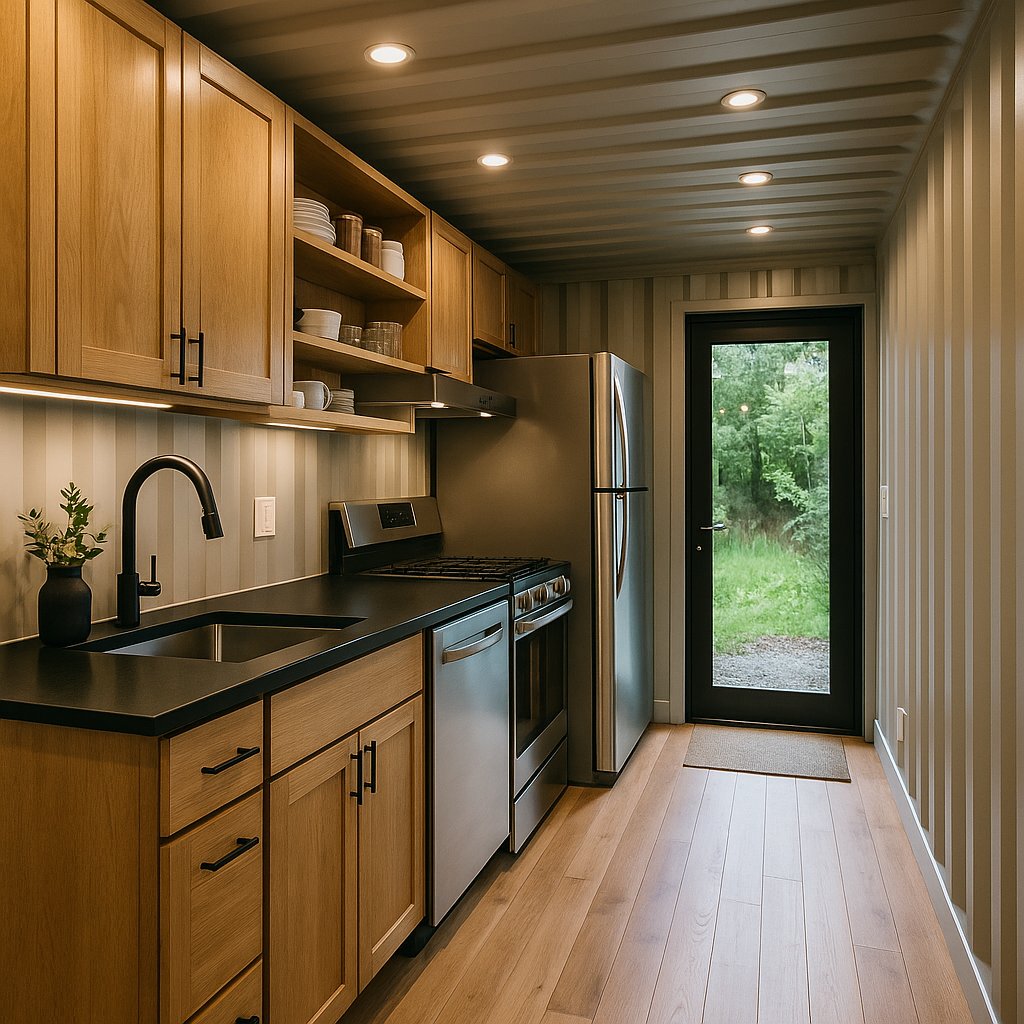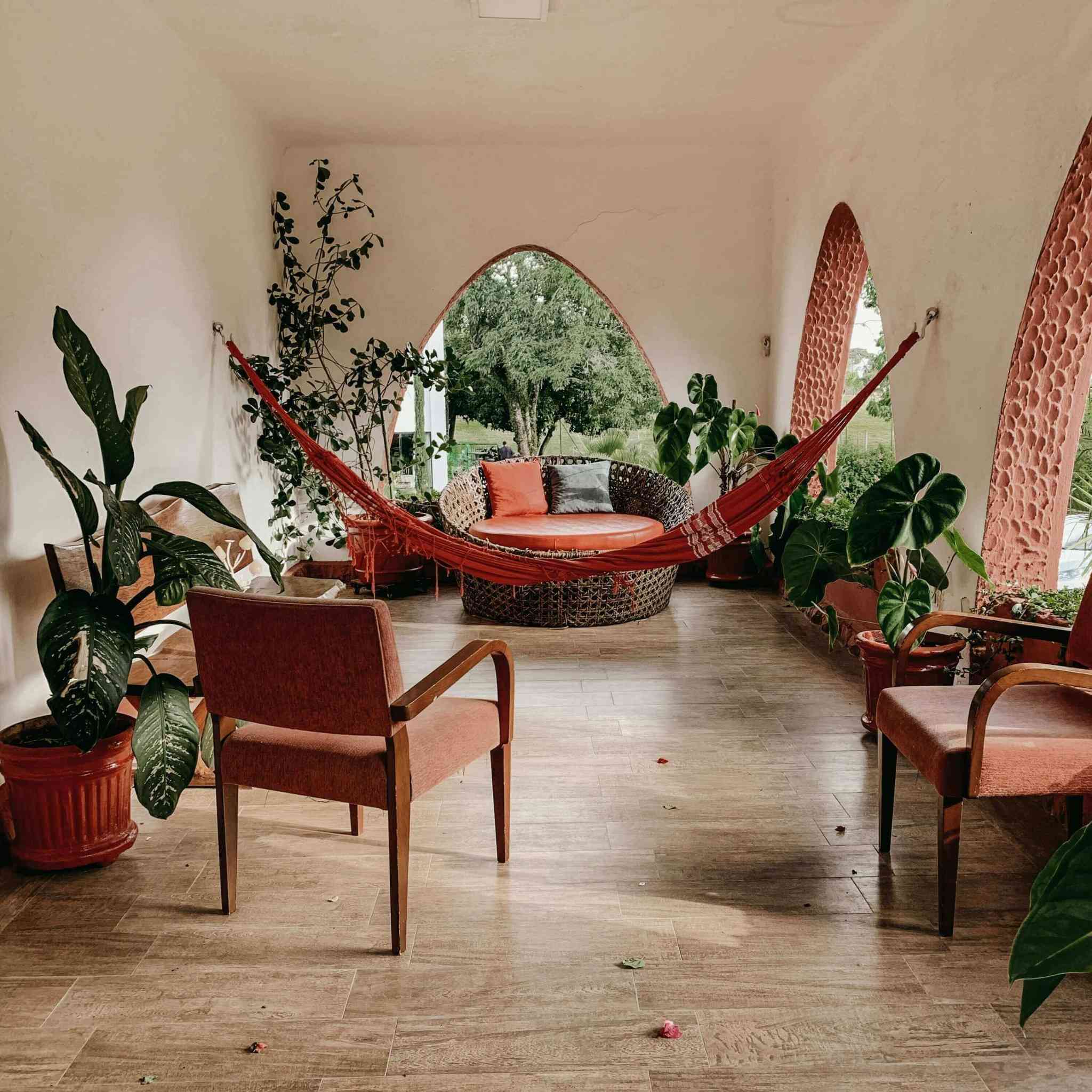Introduction: Why Compact is the New Luxury
Imagine waking up in a space where every centimeter is designed for you. Where nothing is missing, nothing is excessive, and everything has a purpose. Sounds like a dream? This is exactly what compact living offers – and it’s not just a passing trend, but a revolution in how we live.

With increasingly crowded cities, skyrocketing real estate prices, and growing environmental awareness, living in smaller spaces has gone from being a necessity to an intelligent choice. And the best part? It doesn’t mean sacrificing comfort or style. On the contrary: compact means functional, practical, and often even more stylish.
If you’ve ever found yourself thinking about how to optimize your space or if the idea of a minimalist home appeals to you, this article is for you. Let’s explore together why the future of living is compact – and how you can prepare for it.
1. Why Compact Living is Here to Stay
1.1. The World is Changing – And So Are Our Homes
We live in an era of transformation. Major cities are overcrowded, rents are absurdly high, and many people are rethinking what they truly need in a home. If the dream used to be a mansion, today more and more people are discovering that less can indeed be more.
Real-world example: In Tokyo, where space is a rare luxury, 15m² micro-apartments are common and incredibly well-designed. And guess what’s most surprising? Many residents wouldn’t trade them for a larger place – because everything works perfectly there.
But it’s not just happening in Japan. In New York, the famous 20m² “micro-studios” are becoming popular among young professionals who prefer prime locations over extra square meters. And in Brazil? In São Paulo, projects like “Quinto Andar” are introducing similar concepts, proving that Brazilians are also ready for this change.
1.2. Sustainability: Less Space, Less Impact
The bigger the house, the more energy it consumes, the more materials were used in its construction, and the more waste it generates. Compact living not only saves resources but also encourages more conscious consumption.
Impressive data:
- A small home uses up to 60% less energy than a medium-sized one
- Maintenance costs can be up to 3x lower
- The carbon footprint of a compact home is 40% smaller
But sustainability goes beyond numbers. When we live in smaller spaces, we naturally consume less. Without room to hoard, we think twice before buying something new. It’s a virtuous cycle that benefits both our wallets and the planet.
1.3. Technology for Smart Spaces
Refrigerators that fit in drawers, beds that turn into desks, walls that transform into closets – technology is making the impossible possible. And the best part? It’s already within our reach.
Table 1: Innovations That Make Compact Living Functional
| Solution | How It Helps | Practical Example |
|---|---|---|
| Modular furniture | Adapts to different functions | Sofa bed with built-in storage |
| Slim appliances | Saves space without losing efficiency | Washer-dryer combo |
| Smart lighting | Creates an illusion of spaciousness | Built-in LEDs and enlarging mirrors |
| Vertical storage systems | Maximizes every centimeter | Wall shelves and niches |
An interesting case is the Italian startup “Clei,” which developed incredible transforming furniture. A simple bookshelf can become a dining table for six in seconds. Or the Brazilian project “Foldable Furniture,” which creates pieces that disappear when not in use.
2. Design That Challenges Limitations
2.1. Smart Architecture: The Secret to Small Spaces
A good design can make 30m² feel like 50m². How? With proven strategies:
Glass walls are one of the best solutions for compact spaces. They allow natural light to flow and create a sense of continuity between rooms. In a studio apartment, for example, a glass partition between the living area and bedroom maintains privacy without sacrificing visual spaciousness.
Continuous flooring is another architect’s trick. When the same flooring runs through all rooms, the space appears larger. The tip is to opt for light colors and reflective materials, like glossy porcelain tiles or light wood.
Floor-to-ceiling built-in closets are essential. They eliminate dead space and provide efficient organization. The rule is simple: if it can’t be seen, it can be stored.
Inspiring example: The “Casa Cubo” project in São Paulo proves that 35m² can be spacious, bright, and highly functional. With high ceilings, a loft, and custom furniture, the apartment offers everything one needs without wasting space.
2.2. Strategic Decorating: Less Is More (and Better)
No excess. The rule here is: if it’s not useful or beautiful, it doesn’t stay. Some killer tips:
Light colors are key to creating spaciousness. Shades like white, beige, and light gray reflect light and give a clean visual feel. If you want a pop of color, reserve it for small details like cushions or artwork.
Mirrors are a small-space dweller’s best friend. Placed strategically (like opposite a window), they visually double the space and enhance natural light.
Floating furniture frees up floor space and creates an airy feel. Wall-mounted shelves, foldable tables, and sofas with tall legs make all the difference.
Checklist: How to Decorate a Compact Space
✅ Prioritize multifunctionality (e.g., a dining table that doubles as a desk)
✅ Go vertical (high shelves, floor-to-ceiling cabinets)
✅ Keep only the essentials (decluttering is key!)
✅ Choose furniture with legs (creates visual lightness)
✅ Invest in organization (a place for everything)
3. The Emotional Side of Compact Living
3.1. Freedom vs Comfort: The Perfect Balance
Living in small space requires adaptation but also brings incredible sense of freedom. Without excess, you rid yourself of burden of accumulation and discover what truly matters.
Real testimony: Designer Carol, who traded 80m² apartment for 40m² one, says: “At first it was hard, but today I feel lighter. I only have what I love and use.”
3.2. Challenges and How to Overcome Them
Of course, it’s not all roses. Some common difficulties and how to handle them:
Table 2: Problems vs Solutions in Compact Spaces
| Challenge | Solution |
|---|---|
| Lack of privacy | Mobile partitions or curtains |
| Item accumulation | Seasonal rotation (keep only necessary) |
| Feeling cramped | Minimalist decor and good lighting |
4. Compact Living and Quality of Life: Myths and Truths
4.1. Debunking Small Space Stigmas
Many still believe living in reduced environments means sacrificing comfort. But reality shows opposite: when well planned, compact spaces can offer better quality of life than traditional homes.
Truths about compact living:
✔ Less cleaning time – Fewer square meters means faster maintenance
✔ Reduced stress – Fewer organization decisions and less clutter
✔ More practicality – Everything you need is within reach
Myths to bust:
✖ “It’s claustrophobic” – With proper lighting and ventilation, space doesn’t feel cramped
✖ “Nothing fits” – Smart storage solutions solve this
✖ “Only for singles” – Families are successfully adapting this concept
4.2. Impact on Mental Health
Studies show organized, functional environments reduce anxiety. The minimalism forced by compact spaces becomes anti-clutter therapy, helping people relieve themselves from burden of excess possessions.
Professional tip:
“Start by eliminating 10 items you haven’t used in over 1 year. You’ll be surprised by feeling of relief.” – Ana Beatriz, psychologist specialized in environments
5. Creative Solutions for Specific Challenges

5.1. Compact Living for Families
Having children doesn’t have to prevent adopting this lifestyle. Check smart solutions:
Table 3: Adaptations for Families in Small Spaces
| Challenge | Solution | Practical Example |
|---|---|---|
| Play area | Mobile furniture and multifunctional areas | Rug that turns into climbing wall |
| Clothing storage | Beds with drawers and vertical closets | Bunk bed with built-in desk |
| Parent privacy | Retractable partitions and blackout curtains | Master bedroom with screen divider |
Real case: Silva family adapted 55m² apartment for 4 people using transformable furniture and smart organization.
5.2. Pets in Small Spaces
Your pet can thrive in compact environments with:
- Wall-mounted beds saving floor space
- Special shelves for cats
- Nearby public parks for daily exercise
6. Global Trends in Compact Living
6.1. Co-Living: The Sharing Revolution
Co-living concept is transforming urban housing. Beyond being compact, these spaces offer:
- Shared common areas (laundry, kitchen, lounge)
- Included services (cleaning, maintenance)
- Integrated community
Important data:
📍 In Berlin, co-living spaces already represent 15% of rental market
📍 In Rio de Janeiro, startups like Shared House are popularizing model
6.2. Tiny Houses: Freedom on Wheels
Mobile mini-homes are final frontier of compact living. At 15-30m², they offer:
✔ Mobility (can be transported)
✔ Self-sufficiency (solar power and water collection)
✔ Affordable cost (up to 70% cheaper than traditional house)
Fun fact: US has over 10,000 registered tiny houses, with movement growing 15% annually.
7. How to Transition to Compact Living
7.1. Step-by-Step to Downsize Your Life
- Take inventory – List everything you own by importance
- Try before committing – Rent small space for month as test
- Plan every centimeter – Use interior design apps to simulate
- Invest in key pieces – Prioritize quality multifunctional furniture
7.2. Common Mistakes (and How to Avoid Them)
❌ Underestimating need for organization
Solution: Dedicate 10 daily minutes to tidying up
❌ Ignoring lighting
Solution: Combine natural light, general and task lighting
❌ Keeping items “just in case”
Solution: Adopt “if not used in 6 months, donate” rule
Conclusion: Reinventing Home Concept
Compact movement goes far beyond passing fad – it’s cultural shift in how we understand home. In world where time and quality of life matter more than square meters, this may be key to lighter, more meaningful existence.
Your challenge: Choose ONE room in your home and apply ONE compact living principle this week. Then tell us: how was experience?
“True measure of wealth isn’t in what we accumulate, but in space we create to live.” – Adapted from Leonardo da Vinci
So, are you ready to embrace future of living? 🏡




